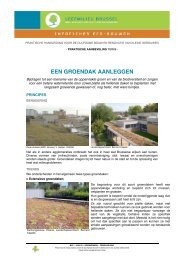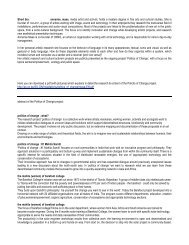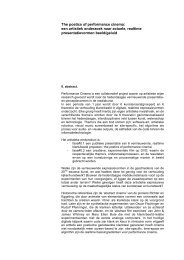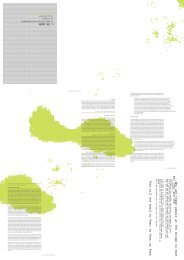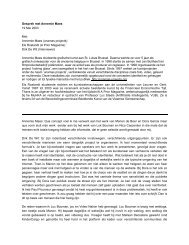MANIFESTO
MANIFESTO
MANIFESTO
You also want an ePaper? Increase the reach of your titles
YUMPU automatically turns print PDFs into web optimized ePapers that Google loves.
with a probable temperature rise of 1.8 to 4 degrees C and a possible rise of up<br />
to 6.4 degrees C.<br />
The impact on agriculture will be significant. Warmer days and nights, more<br />
frequent heat waves, and an increase in the area affected by drought will<br />
decrease yields in warmer environments due to heat stress, increased insect<br />
outbreaks, decreased water availability and land degradation, as well as an<br />
increase in livestock deaths. These impacts are already being experienced by<br />
many communities in countries of the South. There will also be an increase in<br />
heavy precipitation events, which will further damage crops by eroding and<br />
water logging soils. An increase in intense tropic cyclone activity will cause crop<br />
damage in coastal ecosystem, while sea level rise will salinize coastal aquifers.<br />
Pacific islands and large deltas are already affected.<br />
Some regions will be particularly badly affected. In some African countries,<br />
yields from rain-fed agriculture - the vast majority of agriculture in Africa -<br />
could be reduced by 50 percent by 2020. Additionally, agricultural production in<br />
many African countries is projected to be severely compromised.<br />
In Latin America, productivity of some important crops is projected to decrease<br />
with adverse consequences for food security. In much of southern and eastern<br />
Australia and over parts of eastern New Zealand, agricultural production<br />
is projected to decline by 2030 due to drought. In southern Europe, higher<br />
temperatures and increased drought will also reduce crop productivity. Even in<br />
North America, major challenges are projected for crops that are near the warm<br />
end of their suitable range or which depend on highly utilized water resources.<br />
Such circumstances will affect food production dramatically and experts predict<br />
that there will be a grave increase in malnutrition and hunger, affecting millions<br />
followed by a decline in worlds population in the middle of the 21st century.<br />
But one need not wait for the future to witness the horrific, real-life effects<br />
that climate change has on peoples’ ability to grow food and nourish<br />
themselves. This manifesto makes evident the impact of the present blinkered<br />
and destructive industrialized approach to producing food under increasingly<br />
variable weather patterns and urges instead embracing a sustainable,<br />
nourishing and safe mode of feeding ourselves that also helps to mitigate and<br />
adapt to the hazards of climate change.<br />
10 / 11




